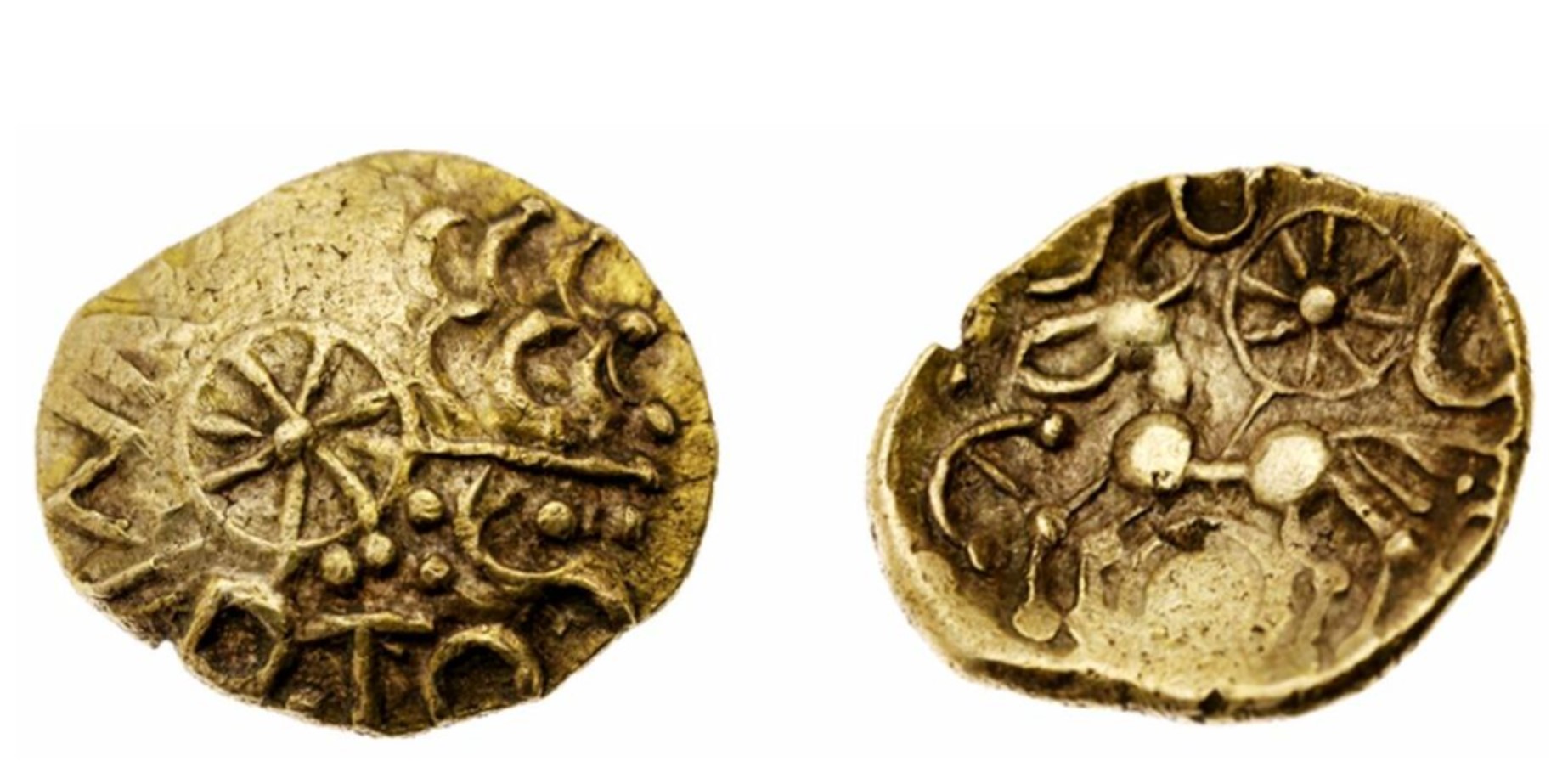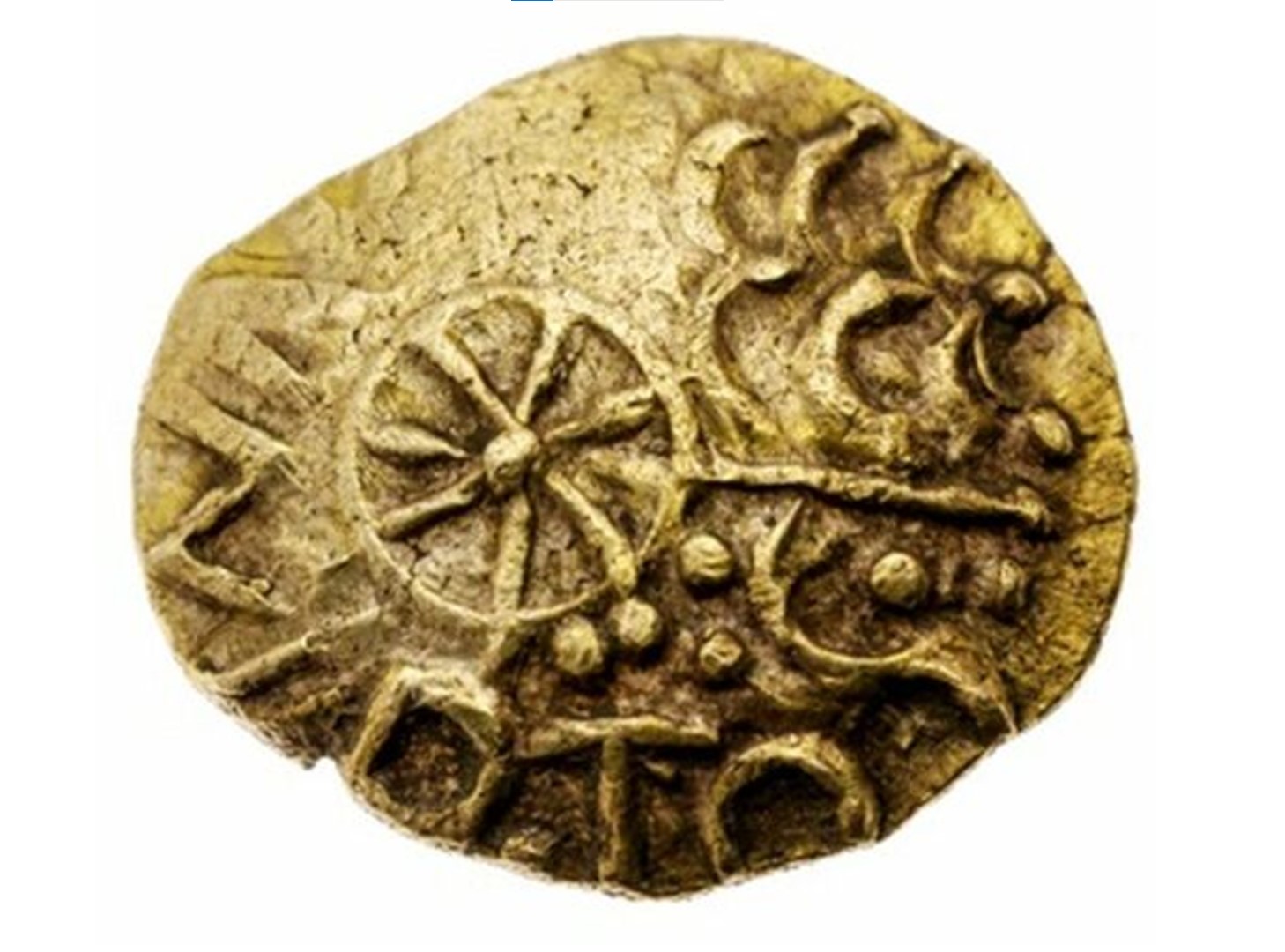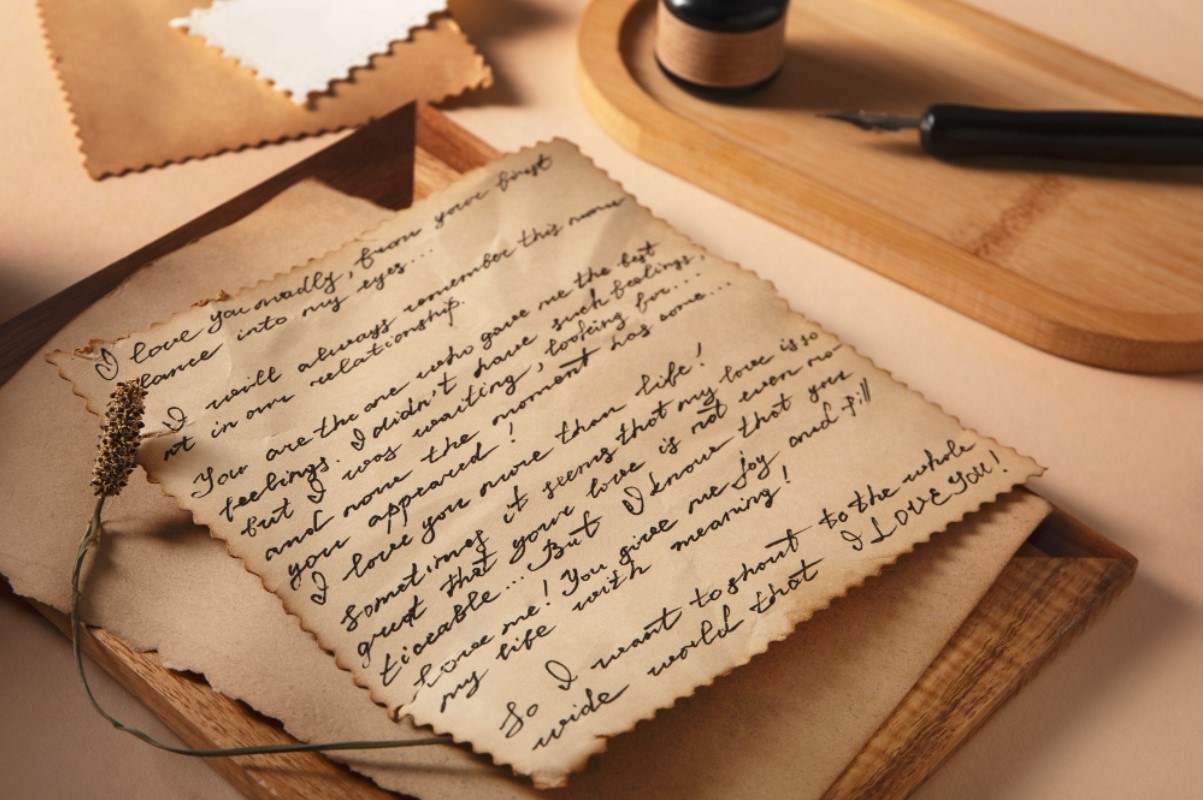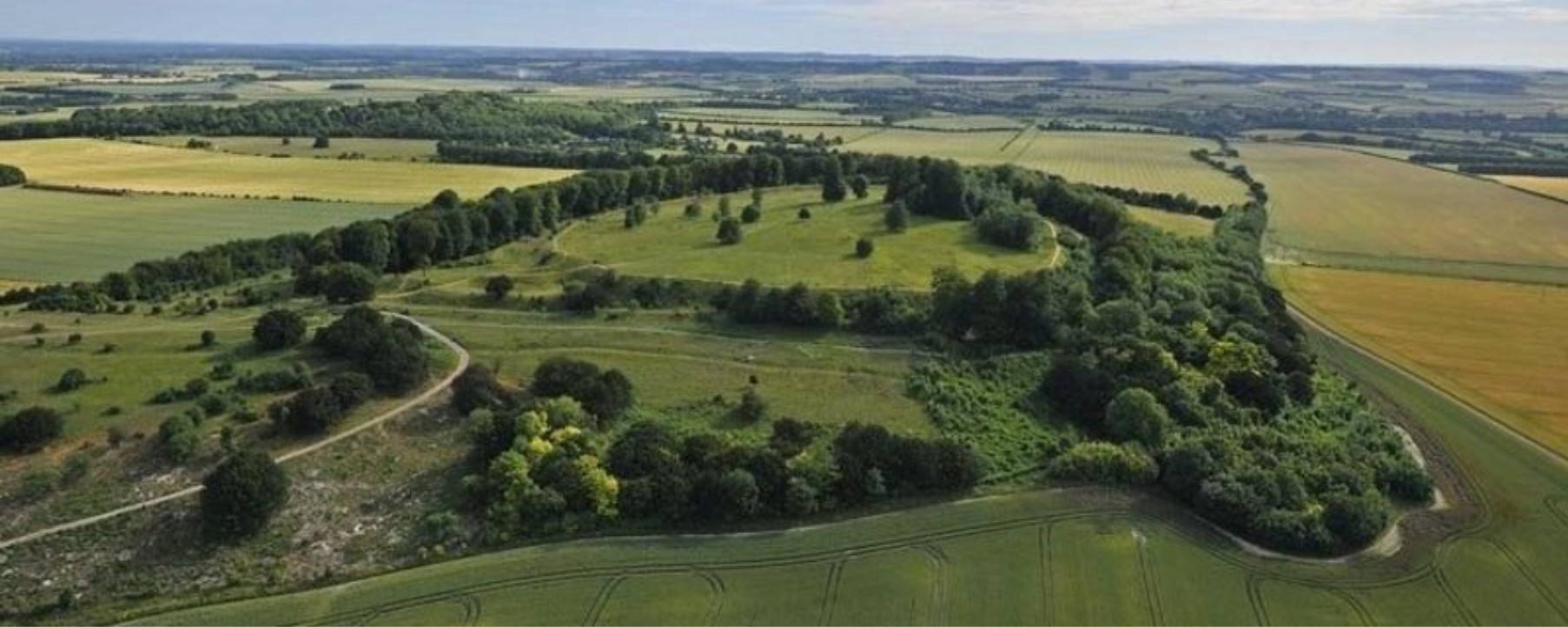An amateur metal detectorist came across the find of a lifetime after he discovered an ancient Celtic coin buried in a field in southern England.
The find, which is inscribed with the name of a Pre-Roman king of Britain, is hailed as a one-of-a-kind discovery and later sold for $20,000 at auction.
New British King Added to Record Book

Before the rise of the Roman province of Britannia in 43 CE, the British Isles were divided into small territories, each ruled over by Cetic-speaking kings.
After discovering the small gold coin in a field in Hampshire, a new king, Esunertos, was added to British history books.
Amateur Detoricist Finds Coin

An amateur metal detectorist, Lewis Fudge, came across the incredible find after searching an area close to his home for items of interest.
Experts surmise the gold coin, which is no larger than a fingernail, was cast over 2,000 years ago. It’s covered in Celtic symbols and bears the name Esunertos, which means “as mighty as the god Esos.”
One of the Best Discoveries of Recent Decades

The young construction worker came across the rare coin after gaining permission from a local farmer to search his field.
Experts who inspected the item before it was sent to auction called the coin “one of the outstanding discoveries of recent decades” (via The Independent).
Coin Sells at Auction for Huge Price

Lewis decided to sell the coin at auction. It was initially appraised at around £4,000. Yet, on the day, it would far exceed everyone’s expectations.
After bidding began, it immediately gained the interest of a few collectors who ended up pushing the price to an astonishing £20,400 (via The Telegraph).
Lewis Fudge Celebrated His Find

As the price began climbing, Lewis admits he was overcome with excitement as he watched on from the sidelines of the auction.
Speaking about the sale of the coin, Lewis told The Telegraph, “I am over the moon; if it were not for people in the auction room, I would have jumped around.”
The Young Dectorist Turned Down Various Offers

The young metal detectorist later revealed he had turned down several offers for the gold coin before sending it to Spinks auction house.
“The collectors I spoke to are gobsmacked. I’m so glad I did not take them up on their private offers before the auction,” he said.
The Beginning of Written Language

Experts believe the coin dates back to an era when written language had just emerged in the British Isles.
According to reports, the coin was created shortly after Julius Caesar first ventured to the British Isles in 55 BC.
Esunertos Ruled from Nearby Fort

After deciphering the name on the coin, experts believe the ancient British king may have ruled somewhere in the surrounding area.
One theory postulates that Esunertos ruled as the king of a tribe centered at the nearby Danebury Hillfort.
Coin Expert Calls Coin Prehistoric Work of Art

Gregory Edmund works as the Iron Age coins specialist at the Spink auction house.
When speaking about the coin, he told The Telegraph, “This fabulous piece of prehistoric artwork completes the mental image we have when we think of Iron Age Britain — the war horse and chariot.”
A Love for Coins

Edmund explains that discoveries such as the Esunertos coin are the reason why he chose this particular profession.
“This is the reason I come to work: to document the discoveries of national importance and share that knowledge directly with museums and amongst academics, collectors, and the public at large,” said Edmund.
Researchers Hopeful for More Coins

The discovery of the pre-Roman coin is important for several reasons.
While it helps to shed light on the ancient kings of Britain, it also gives researchers hope that other coins of the same nature await discovery across the British Isles.
